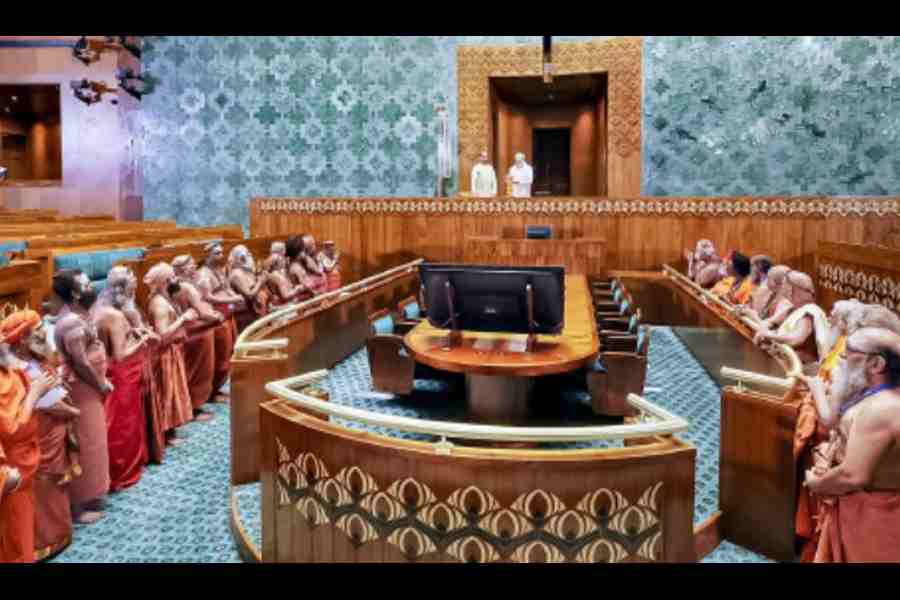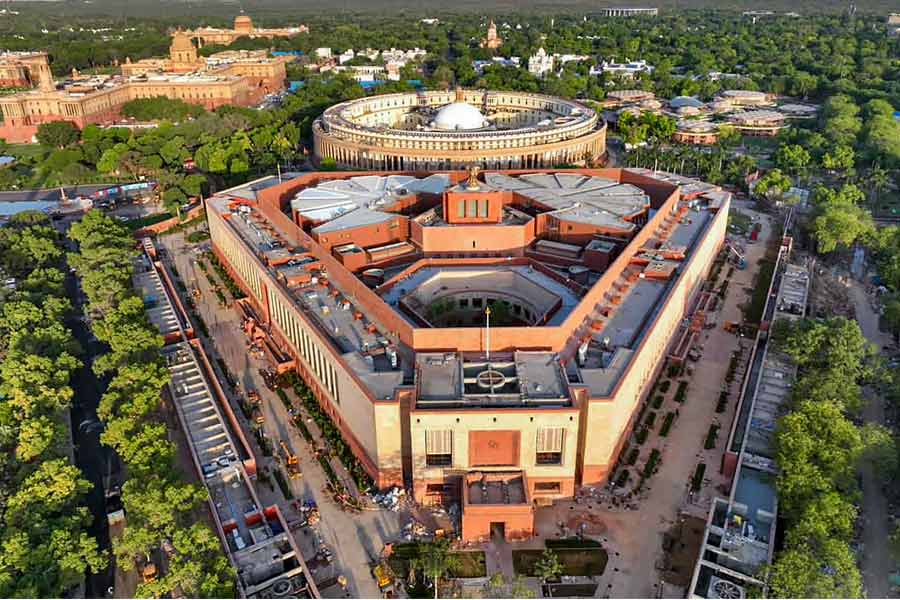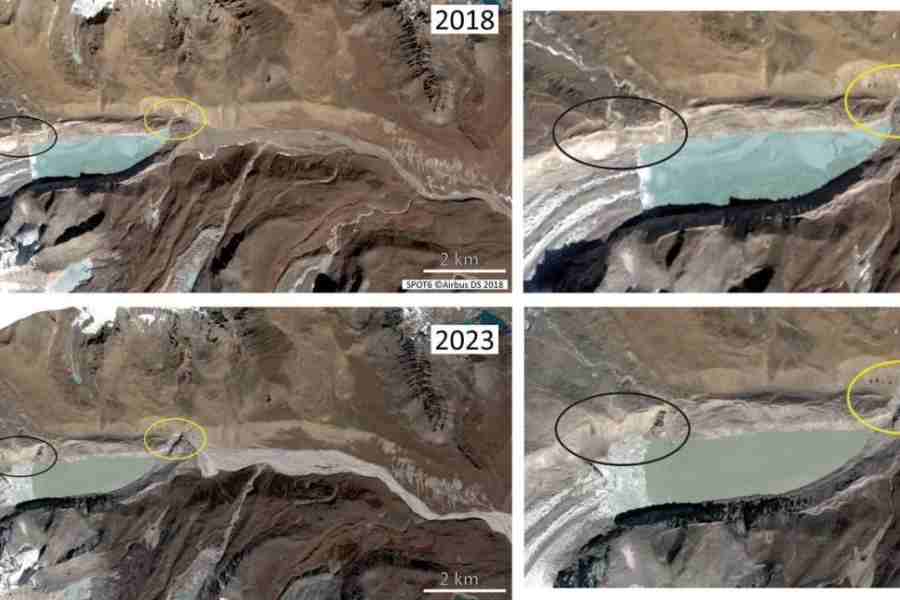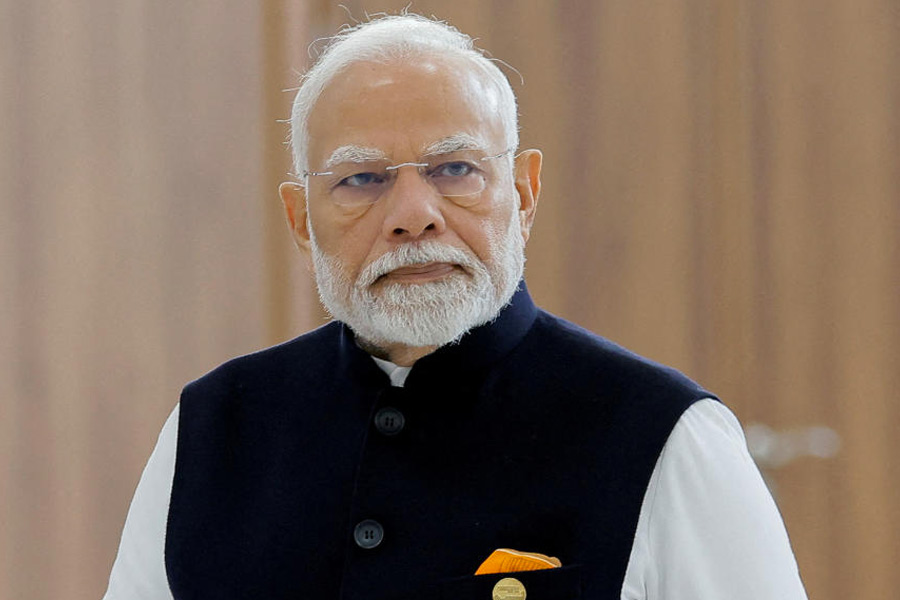Prime Minister Narendra Modi on Sunday morning installed a sceptre or sengol in the new Parliament building amid religious rituals by priests, harking back to a tradition associated with the Chola kings to consecrate the house of democracy.
Modi prostrated himself before the sceptre and then carried it inside the new Lok Sabha chamber, followed by a procession of priests chanting mantras.
He placed the sceptre beside the Speaker’s chair, apparently seeking to stress the primacy of Hindu culture and traditions in amulti-religious and secular country’s seat of democracy.

The Prime Minister then formally inaugurated the new Parliament building. This was followed by multi-faith prayers, held on the premises but outside the Lok Sabha chamber where the sengol was placed by Modi.
Modi returned to the new Lok Sabha chamber around noon amid loud chants of “Bharat Mata ki jai” and “Modi, Modi” to address the guests from various fields and the assembled MPs, chief ministers and leaders of political parties.
He received a standing ovation as he walked up to the pedestal along with Lok Sabha Speaker Om Birla and Rajya Sabha Deputy Chairperson Harivansh.
In his address, Modi said that during the rule of the Cholas in the south (a millennium ago), the sengol or sceptre was seen as a symbol of kartavyapath (the path of duty), sevapath (the path of service) and rashtrapath (the path of the nation).
He said the sengol had symbolised the transfer of power from the British in 1947 — a claim historians and scholars have contested over the past few days.
The Prime Minister said that under the guidance and blessings of priests from Tamil Nadu (where the sengol had been made), he had installed the “sacred sengol” inside the Lok Sabha. He appeared to claim credit for “restoring the dignity and honour of the sacred sceptre”.
“Whenever proceedings start in the new House, the sengol will inspire us,” he said.
BJP social media head Amit Malviya posted a tweet, attaching a video of Modi prostrating himself before the sengol, that said: “With this one gesture, the Prime Minister has reclaimed the long forgotten Dharmic tradition of India, honoured our saints and dharma gurus, who have guided rulers since time immemorial to uphold Dharma.”
He added: “Sanatan parampara will always continue to guide our holy land.”
In his 30-minute address, Modi repeatedly invoked the symbolism of the new Parliament building to emphasise a “new” beginning, apparently unfazed by the boycott of the inauguration by about 20 Opposition parties. He did not mention their absence.
“This new building will witness the rise of a self-reliant new India. This new building will witness the fruition of the resolution of a developed India,” the Prime Minister said.
“Some dates become immortal in the face of time. Today, May 28, 2023, is one such day.”
Messages from President Droupadi Murmu and Vice-President Jagdeep Dhankhar, who had not been invited to the event — a key reason for the Opposition boycott — were read out ahead of Modi’s address.
The Opposition had demanded that the new Parliament be inaugurated by the President and not the Prime Minister. It was no surprise that Murmu’s message sought to justify the government’s move.
“The architects of our Constitution had imagined a nation that will be characterised by the legislative principles expounded by the members elected democratically. So, I am delighted that the Prime Minister, who is the symbol of the Parliament’s trust, is inaugurating this building,” Murmu’s message, read out by Harivansh, said.
The objective behind not inviting the President or the Vice-President, whom protocol accords precedence before the Prime Minister, was all too obvious as the event turned into a one-man show.
Basking in glory, Modi appeared to suggest the inauguration of the new Parliament building was of global importance, key to the world’s future.
“When India moves ahead, the world too moves ahead. This new Parliament building will herald the development of the world with India’s development,” he said.
“Every law that is made in this new Parliament building will help India come out of poverty, create new opportunities and become the basis for the creation of a developed India in the next 25 years.”
Modi used his speech to virtually campaign for next year’s Lok Sabha polls, playing up his government’s achievements of the past nine years.
He said his government had not only constructed the new Parliament building but had in the last nine years built 4 crore new houses for the poor, 11 crore toilets, more than 4 lakh kilometres of roads to connect villages, over 50,000 water bodies and over 30,000 panchayat buildings.
“From panchayat bhavans to Parliament, only one inspiration guided us: the development of the nation and its people,” he said amid applause. Chants of “Modi, Modi” were heard again as the event ended.











